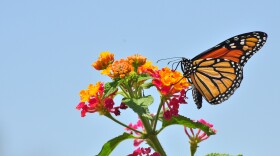The State Department of Natural Resources is keeping an eye out for one of the most destructive insects in our northern spruce and fir trees.
After nearly 30 years on hiatus, it looks like the spruce budworm is once again rearing its head.
The State Department of Natural Resources’ Bob Heyd tells us that the spruce budworm is a native insect that’s been cycling in North America throughout recorded history.
“It’s basically nature’s way of taking a fairly shade-intolerant, fast-growing species and regenerating it every 30 to 50 years,” Heyd says.
According to Heyd, the DNR has seen some fluctuating foliage levels in recent years indicating the insects’ return, but this year makes two consecutive years that they’ve seen browning trees in mid- to late-June due to the budworm webbing.
“We’re kinda concerned, as is Ontario, that this may be the beginning … of the next regional outbreak,” he says.
Heyd says areas most affected include the southwest and far east regions of the Upper Peninsula, and some northern areas of the Lower Peninsula.
Don’t go grabbing your sprayers just yet though, because Heyd tells us it’s too late to do anything this season.
“The budworm is finished feeding for this year. It has one generation a year, it starts feeding when the shoots expand in the spring and it’s finished feeding usually by the third of fourth week in June at the latest,” he explains. “So even though you may see a little bit more browning, it’s finished feeding.”
But according to Heyd, the budworm isn’t all bad. It provides an efficient way of clearing out old, stressed trees and regenerating the forest.
“It also ends up being very good habitat for 10 or 20 years as this new growth comes back up for songbirds and different animals that like the low and dense vegetation,” he says.
Heyd advises that landowners wait to evaluate the condition of their trees until the summer rains have had a chance to wash all the brown needles from their branches.
He adds that it’s very easy to spray trees around the home in the spring to prevent defoliation.
For larger and more heavily wooded lots, he recommends consulting a professional.





